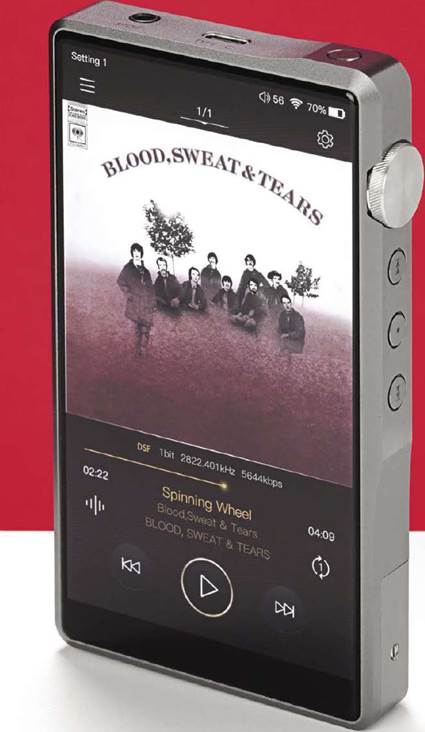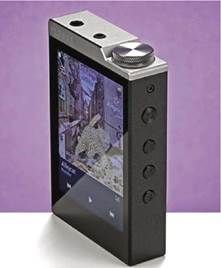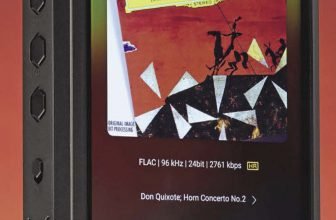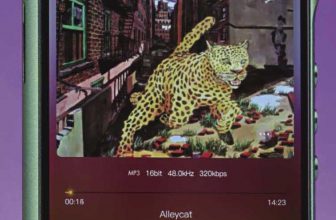Lotoo PAW 5000 Review
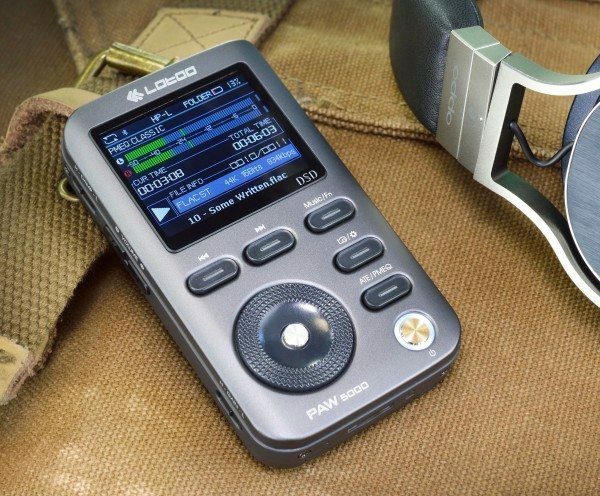
Fed up with touchscreen portable players? Lotoo’s PAW 5000 takes a different approach
Since the demise of the iPod Classic, the dedicated portable audio player has staged a small but meaningful fight back. Music is a storage-heavy medium and relying on your mobile phone to hold it all is problematic even before any argument about sound quality is entertained. Many players that have hit the market recently have been heavily influenced by smartphone and tablet touchscreen technology and are often rather large as a result.
This makes the Lotoo PAW 5000 stand out from the pack. Like the PAW Gold reviewed in HFC 399, the PAW 5000 is controlled exclusively via buttons and a jog wheel with the small screen showing a selection of information about the material playing. Where the PAW Gold costs an ambitious £, the PAW 5000 is yours for a more wallet-friendly £.
While the price is much lower, the specification is far from bare bones. The Lotoo supports file formats up to and including DSD 2.8 although oddly, the maximum sample rate for other formats is 24/96. Material can be played back as recorded or via an internal EQ system that offers both preset and custom filter settings. The PAW 5000 is well served for connectivity too with 3.5mm headphone socket, 2.5mm balanced headphone out, a combined line and S/PDIF output and Bluetooth 4.0. As it is not internet capable or app driven, it is unable to take advantage of streaming services which is where rival models that use Android and iOS operating systems tend to have the upper hand.
What you also don’t get is storage. Given that 128GB of capacity can be yours for under £ , this isn’t the end of the world but you will need to budget for memory when buying. The PAW 5000 is fitted with a single micro SD card slot and Lotoo has had the presence of mind to ensure that the supplied software will support up to 2TB of information via the SDXC standard, even though at present the maximum available is 512GB. A minor annoyance is that the card socket has no form of protection and so is vulnerable to knocks and impacts. Be sure to let the Lotoo player format the SD card before you go storing your music on it, as it can be a bit picky about reading the content until you do.
Otherwise, the build of the PAW 5000 is good for the asking price. There is rather less in the way of heavyweight casework than there is on the PAW Gold, but everything feels commendably solid and well thought out. The button action is good and the display – while rather busy – is clear and easy to read. Lotoo supplies a custom USB cable for charging and communicating with the PAW 5000 and while it is a little on the short side, it works perfectly well.
Where I am less convinced by the Lotoo is with the interface itself. It always seems to need more button presses to perform a given action than you think. As a default, the player also switches itself off rather too quickly and given that no button except the volume will work until the screen is on, this is a bit of an annoyance. While the display is bright and reasonably easy to read, some albums that have consistently displayed correctly on other devices revert to listing alphabetically on the Lotoo for no obvious reason.
The good news is it is worth the effort to get to grips with the controls. With the EQ settings off and the gain setting in high, the PAW 5000 does an awful lot right. With the Etymotic HF3 from this month’s Mini Test, there is a sense that what the player is doing is fundamentally accurate. The only slight curiosity is that gain setting. Like most armature based in-ear headphones, the Etymotic is extremely sensitive but the presentation is noticeably better running at lower volume levels in the ‘High’ setting than when hitting the same level in the ‘Low’ mode.
This oddity aside, the PAW 5000 has an even handedness and refinement that is very impressive. The player does an excellent job of balancing very good detail retrieval, especially at the top end of the frequency response, with a smoothness and refinement that keeps the Etymotic from tipping over into being overly bright or aggressive even with the boisterous A Color Map Of The Sun by Pretty Lights. There is also very little sense of it imparting much of itself on the music when set this way. If you pair it with headphones that can manage the same feat, you will find that you are treated to the sound of the recording rather than the sound of the equipment.
The only ‘fi ngerprint’ that the Lotoo does leave on the performance is that the bass response is slightly lean. There is plenty of detail and it is extremely agile, but there isn’t the impact that the same earphones manage on the end of the Oppo HA-2. Happily, the PMEQ settings are genuinely effective at increasing the low end without having an undue effect on the good work being done in the rest of the frequency response. The process of setting up your own personal preferences is slightly involved, but you can work through the filter and gain settings in a logical way and you can carefully boost the signal to suit. With a little trial and error, the results are impressively effective.
With everything adjusted, the Lotoo reveals itself to be a very capable digital audio player with a variety of musical styles. The handling of high-resolution material is extremely good as well. It is able to display the benefi ts of a 24-bit/96kHz version of David Gilmour’s Rattle That Lock with genuinely excellent tonality and an appreciable sense of space to its presentation.
Moving from the Etymotic to the Noble 6 in-ear monitors demonstrates that it is able to do justice when connected to a partnering set of headphones that cost almost twice as much as itself. With the Noble and a pair of Oppo PM-3 headphones connected in turn, it demonstrates that while the quality of the headphone output is extremely good and comfortably superior to any smartphone I’ve tried, there is not much in the way of gain – even with the sensitivity gain (called ‘Damp’) set to ‘high’. The PAW 5000 is able to drive full-size headphones and sounds very good while it does so, but there will be people who find themselves needing more headroom. It also tends to noticeably harden up at higher volume levels, which further limits the performance.
If you pay any attention to your partnering equipment, however, the Lotoo is a seriously accomplished digital audio player at a very reasonable asking price. If you are able to live with a player that forgoes the option to check your social media at the same time as you listen, and you can master the slightly clunky interface, there is very little at the price that can match the refinement, detail and admirable neutrality of the Lotoo. When you consider all of those additional features – like the Bluetooth, digital output and expandable memory – you have a portable music player that offers a brilliant performance at a very reasonable price.● Quoted battery life: 10 hours● DSD file support up to 2.8MHz● 3.5mm & 2.5mm headphone outputsDIMENSIONS (WxHxD) 55 x 98 x 18mm.

